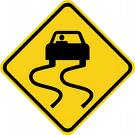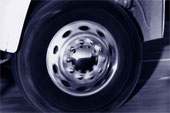Stability Control Automobile Technology

Car buyers see these stability control commercials where a family is saved on a rainy night and think that this is pretty cool automotive technology.
But what they may not know is that automotive stability control systems are mostly operated and controlled by antilock brake technology.
Although there are various types of stability control systems that are found on today’s vehicles.
Traction control and stability systems are linked to the ABS system and on some vehicles they are linked to both the brake and electronic suspension systems.
On some of these expensive automobiles, a driver-controlled switch can be used to disable the traction control while the stability safety features remain active.
High tech systems use the angle of the steering wheel and the speed of the wheels to calculate the chosen path of the driver.
The main control module will then monitor the lateral sensor and the G-forces on the vehicle to measure where the vehicle is actually going.
Stability control systems can help maintain control of the vehicle during heavy braking, hard acceleration and even coasting.
If the brakes are already applied but over steer or under steer is occurring as reported by the above sensors the fluid pressure to the appropriate caliper is increased to help maintain driver control.
Abs system overview
Abs systems remove brake lockup that greatly increases stopping distances. Remember that a tire that is about to slip produces more friction against the road than one that is locked and in a sliding condition.

Once a tire loses its grip on the road friction is reduced and the vehicle takes much longer to stop.
In many cases this increased stopping distance can be responsible for auto accidents.
Back in the old days driving instructors would teach students to pump the brake pedal to control lock up. Leaving it up to the driver to remain calm and perform this operation effectively during a panic situation was a lot to ask.
This would be the driving force behind the development of Anti lock braking automotive technology.
ABS systems automatically pulse the application of the brakes in a panic stop situation for you. You do have to hold steady force on the brake pedal and steer but the car handles the brake pedal pumping part.
This is accomplished through hydraulic pressure modulation. Basically this is when the electronic control unit meters the fluid flowing to each individual caliper.
The dash mounted abs light is there to notify the driver of a malfunction. It is also a warning to the driver that the anti-lock brake system might not function as expected. Too often I see motorist driving around with this light illuminated.
Often this is due to concerns about repair costs. This is a valid concern but trust me when I say that a traffic accident could cost much more then the needed auto repairs.
If you have some auto repair experience it is possible that you can fix it yourself with diy ABS scan Tools.

